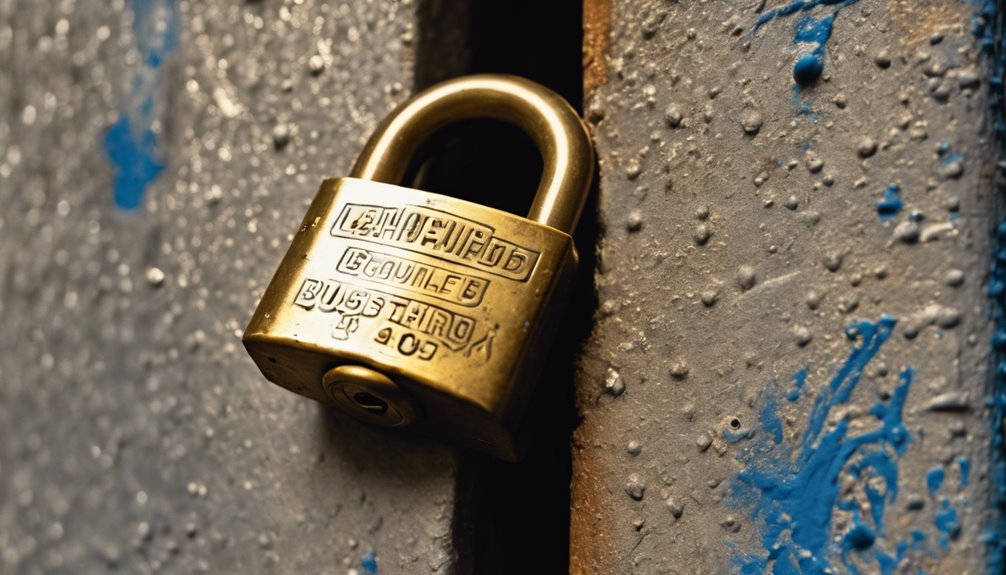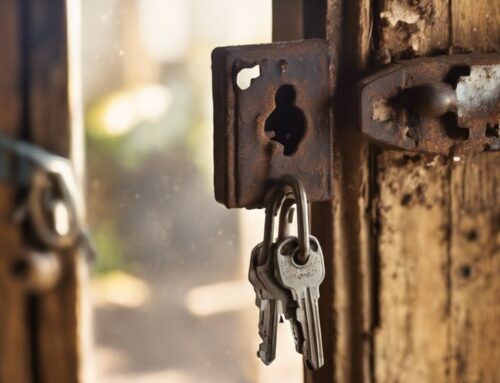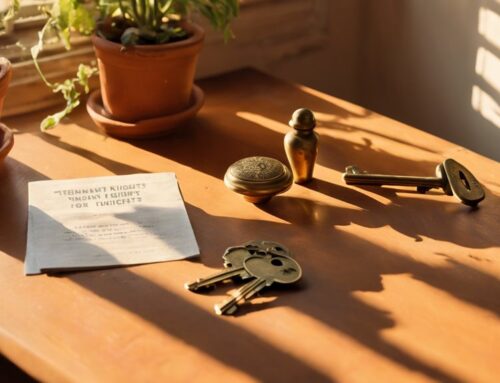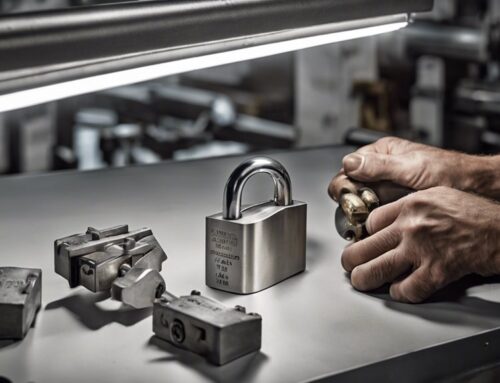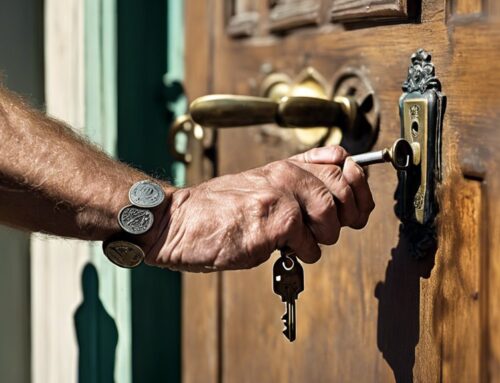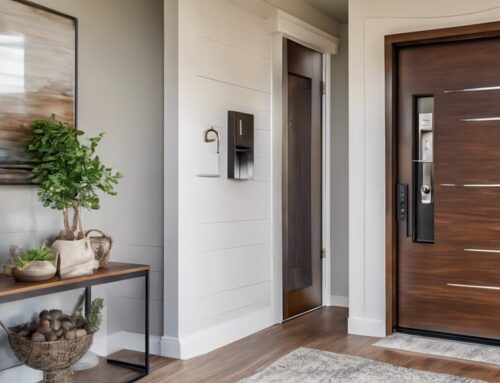When it comes to securing your home or business in Ohio, understanding lock standards and safety regulations is essential. You might be surprised to learn that specific requirements can impact not just your security, but also your compliance with local laws. From deadbolt installations to digital lock guidelines, there are key factors to take into account. Have you thought about how these regulations affect your safety plan, or what could happen if you overlook them? The implications go beyond just protecting your property.
Key Takeaways
- Deadbolt locks with a one-inch throw are mandatory for all exterior doors in dwellings to enhance security against forced entry.
- Commercial properties must utilize access alarms and motion detectors to maintain security while complying with safety regulations.
- Regular inspections and maintenance of locks, doors, and windows are crucial in upholding security measures and preventing wear.
- Temporary locking devices in schools must adhere to strict regulations and cannot impede egress during emergencies or drills.
- Compliance with Ohio tenant rights, key duplication laws, and the Ohio Building Code is essential for both residential and commercial properties.
Overview of Lock Standards
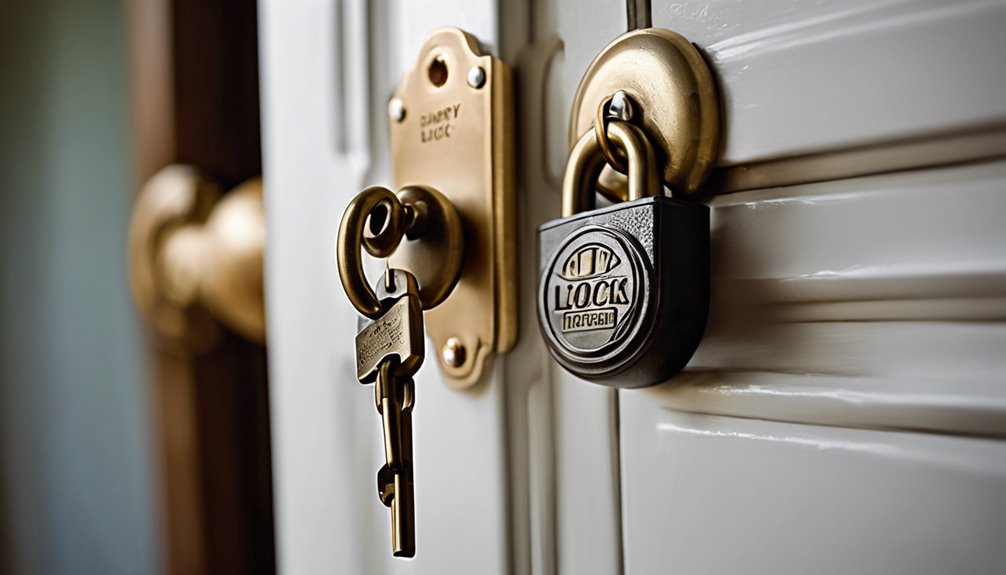
Lock standards in Ohio are designed to enhance safety and security across various dwelling types. These regulations emphasize the necessity of deadbolt locks for apartment buildings and multi-unit dwellings, ensuring your home meets the standards set by the Ohio Board of Building Standards.
Deadbolts are essential for exit doors, as they must function without requiring keys or specialized knowledge to release from the egress side. This user-friendly feature is vital for ensuring a safe and efficient evacuation during emergencies. Additionally, all doors must allow unlocking from both sides to further promote safety during exits. Digital and smart locks reflect modern advancements that must also comply with these regulations to ensure safety.
When it comes to access to dwelling units, your doors must have deadbolt locks with a minimum one-inch lock throw, enhancing resistance to forced entry. If you have operable windows close to ground level, be aware that they need adequate sash locking devices to prevent unauthorized access.
Additionally, basement hatchways must be secured to prevent anyone from entering without permission. It's essential that all exterior doors maintain good condition, ensuring that hardware operates effectively for ideal security.
Furthermore, special locking arrangements exist for child safety in residential facilities, stressing the importance of accessibility and emergency protocols. In certain scenarios, such as schools, temporary door locking devices come into play but under stringent regulations.
These devices, aimed at bolstering security during emergencies, highlight the delicate balance between safety and freedom in your living or working environment. Understanding these standards empowers you to make informed decisions and enhance your safety while fostering a sense of freedom in your day-to-day life.
Installation and Maintenance Guidelines
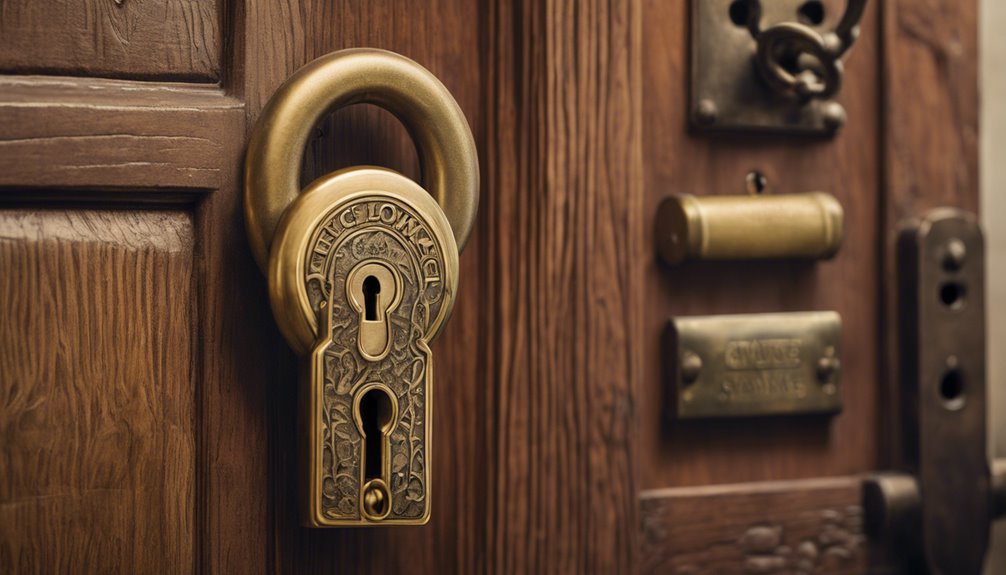
When installing and maintaining locks, adherence to specific guidelines is vital for guaranteeing both security and functionality. Start by measuring the door to confirm lock alignment, with the knob typically positioned at 36 inches from the floor and the deadbolt 5.5 inches above it. Mark the center for precise placement, and use a one-inch spade bit to drill holes for the deadbolt. Verify your drilled holes are straight and level to avoid angled installations, employing a hole saw for accuracy. Additionally, it is critical to ensure that you are compliant with tenant rights concerning lock changes in Ohio, particularly when it comes to evictions.
Once you've drilled and mortised the latch and deadbolt into the door frame, install the lockset making sure it aligns with your marks. Hand-tighten screws to avoid over-tightening, which can cause damage, and always use the screws provided for each component. After installation, test the lock's function and adjust the latch as needed; smooth operation indicates proper alignment. Furthermore, ensure that after an eviction, you handle lock changes according to Ohio's legal requirements.
Regular lock inspections are imperative—visually check for wear while verifying handles and locks are in good working order. Address any issues quickly to prevent malfunctions, and always use compatible replacement parts if needed.
Educate users on proper operation to minimize damage, reminding them not to force or over-tighten locks. Finally, keep records of maintenance and confirm compliance with Ohio's building codes and fire safety regulations. This approach will help secure your home or business effectively.
Security Requirements for Entry Points
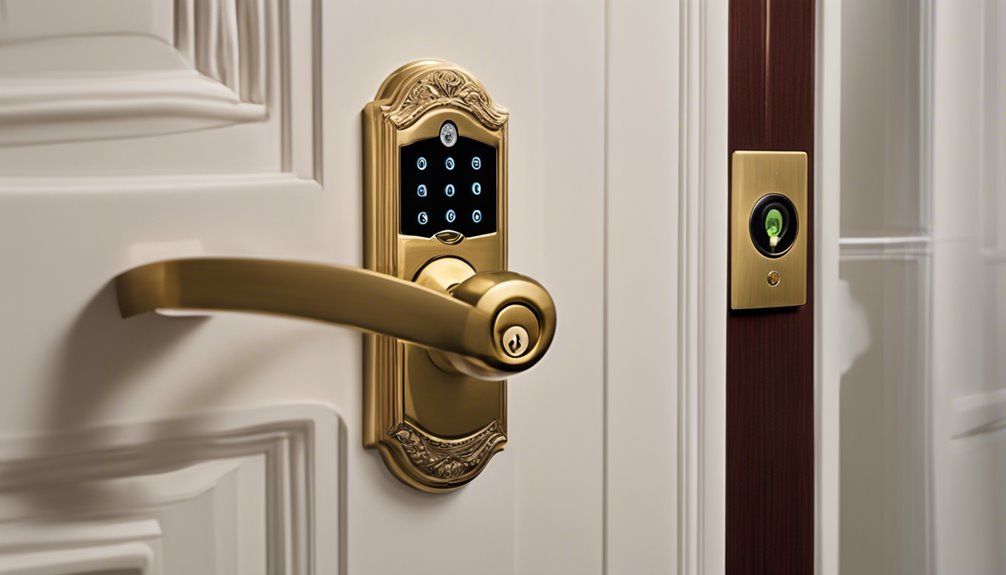
Securing entry points is a fundamental aspect of both residential and commercial safety. Whether you're a homeowner or a business owner, understanding the specific security requirements is essential to ensuring your property remains safe and secure.
For residential properties, every entrance, especially exterior doors, must have robust locks that tightly secure the doors in place. It's mandated that locks include a deadbolt with a minimum one-inch throw to resist forced entry. Additionally, these locks should allow free egress from the inside without needing keys or special tools, enhancing your safety during emergencies. Furthermore, locksmiths performing key duplication must follow Ohio key duplication laws to ensure that only authorized individuals can have duplicates of the keys. Therefore, it is crucial for homeowners to understand the lock picking laws to avoid any legal ramifications when accessing their premises.
Window sash locking devices are required for operable windows six feet above ground, while basement hatchways need security devices to prevent unauthorized access.
In commercial settings, the stakes are similarly high. Every entry point should have an access alarm and motion detectors to swiftly identify unauthorized access. Furthermore, implementing a silent alarm can notify security personnel and law enforcement in real-time during critical situations. To further enhance security, dispensaries must also adhere to strict Ohio dispensary security laws regarding surveillance systems and alarm requirements.
You must also install a compliant video surveillance system to deter potential intruders and record any incidents. Ensure compliance with the Ohio Building Code as well; locks that restrict egress must meet specific width requirements and lighting must be constant in exits.
Maintaining all exterior doors and windows in good condition is essential to uphold security measures, forming a protective barrier against potential threats. By actively addressing these security requirements, you empower yourself to safeguard your freedom and well-being in your own space.
Temporary Locking Devices in Schools
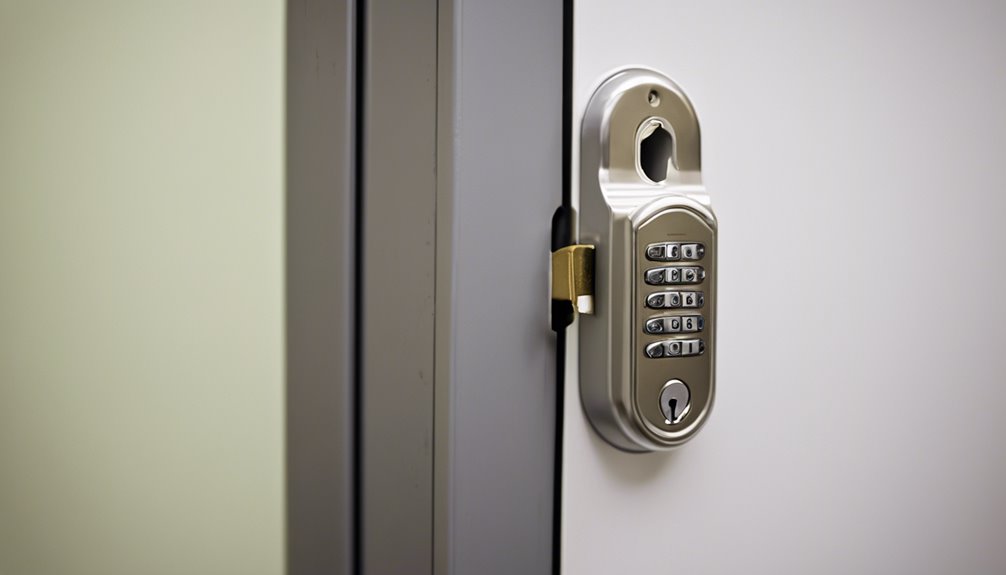
In light of increasing concerns about school safety, temporary locking devices have emerged as a significant consideration for protecting students and staff during emergencies. While these devices can provide an additional layer of security in active shooter situations, their use is strictly regulated to prevent misuse and unintended outcomes. You need to adopt a thorough school safety plan and file it appropriately to employ these temporary solutions. Many schools are working with locksmiths in Ohio to ensure compliance with safety regulations.
Temporary locking devices must be engaged solely by authorized school staff and can only be deployed during emergencies or drills, not outside these contexts. It's vital to notify local police and fire officials before using these devices, maintaining lines of communication during crises. This guarantees an informed response from emergency services when challenges arise.
While temporary devices can enhance security, they must also comply with Ohio Building Code and fire safety regulations. This means they shouldn't be permanently affixed to doors, and their installation mustn't compromise egress from the building. In addition, in-service training is mandatory for staff to verify everyone can operate the devices correctly.
Despite these precautions, one must acknowledge the potential risks. Some temporary devices can impede escape and intervention, and there are concerns about compliance with accessibility standards under the Americans With Disabilities Act. For this reason, always consider if existing classroom security locks, which are deemed sufficient against active threats, could be a safer and more compliant alternative. Additionally, understanding local jurisdiction requirements for locksmith services can further inform the implementation of these safety measures.
Operational Rules for Lock Devices
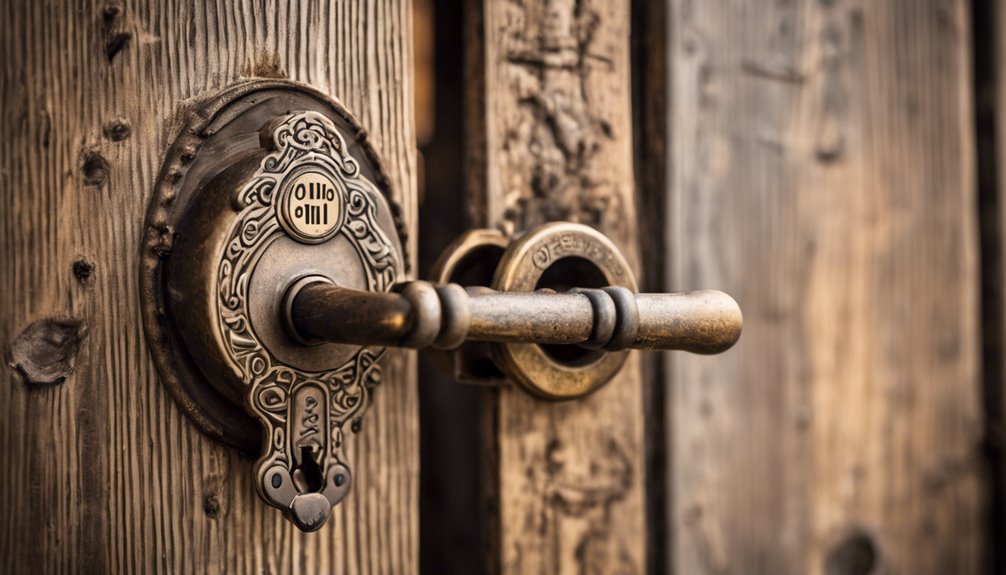
When it comes to operational rules for lock devices, compliance is key to ensuring tenant safety in Ohio's multi-unit dwellings.
You'll want to follow TDLD approval guidelines closely, as they set forth essential criteria for effective locking mechanisms. Additionally, implementing lock maintenance best practices will help you maintain security and functionality, reducing potential hazards associated with malfunctioning locks. Staying informed about high-security lock installations can also help ensure that your locking systems adhere to state regulations and provide excellent protection. Furthermore, knowing about licensed mobile locksmith services can assist you in addressing any urgent lock issues effectively and safely.
TDLD Approval Guidelines
To guarantee the effective implementation of Temporary Door Locking Devices (TDLDs) in Ohio schools, strict adherence to established approval guidelines is vital.
First, you must provide proof of a school safety plan filed in accordance with Ohio Revised Code section 3313.536. TDLDs should only be engaged in emergencies or during active shooter drills by designated staff members for a limited duration prescribed by your safety plan.
Operational requirements state that TDLDs shouldn't be permanently mounted, except for certain components that don't impede normal door use. The removal process must be straightforward, ideally requiring only one operation, unless modifications for automatic sprinklers are in place.
To gain approval, you'll submit an application to your local building department, including details confirming the device meets operational standards. Upon evaluation, if non-compliance is identified, you'll be informed and allowed to appeal.
Remember to maintain in-service training records for staff on TDLD use, as these may be required by fire officials. Notification to police and fire departments prior to using TDLDs is also a vital part of your safety protocol. Additionally, consider consulting with certified technicians to ensure your locking devices meet safety regulations.
Stay informed and compliant to guarantee a safe educational environment.
Lock Maintenance Best Practices
Lock maintenance best practices are vital for guaranteeing the longevity and reliability of your locking systems. Start by confirming proper installation and alignment; your doors must fit snugly within their frames to avoid damaging the locks. A deadbolt and deadlatch should align perfectly with the strike plate, adhering to the manufacturer's specifications to prevent faulty performance.
Manage your keys wisely. Only replicate the original or master key, avoiding duplicates that can damage the internal mechanisms. Keep your master key secure and appoint a custodian for proper handling.
Regular maintenance is also important. Lubricate your locks with a designated door lock lubricant to thwart corrosion, and clean them frequently with appropriate cleaning agents. Always dry locks thoroughly after disinfecting to guarantee effective lubrication.
Lastly, don't neglect thorough inspections. Check screws, hinges, and plates regularly to ensure they're secure. Make sure the deadlatch and strike plate connection is consistent, and that the deadbolt slot allows full extension.
Avoid unnecessary tinkering with hardware to prevent potential damage. By following these practices, you uphold the integrity and functionality of your locks, safeguarding your freedom and security.
Access Control and Key Management
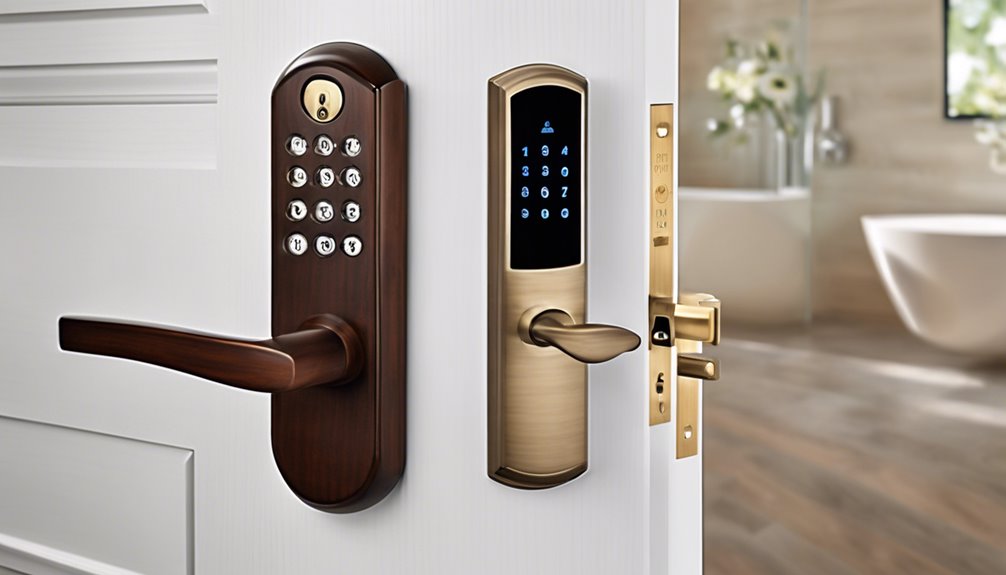
While effective access control and key management are fundamental to maintaining security, their implementation requires a structured approach that considers both technology and human factors.
You need an automated access control system that utilizes computerized databases to efficiently track who can access specific areas or assets. This level of oversight not only bolsters security but also allows for precise monitoring of key usage, guaranteeing a reliable and accountable environment.
Key issuance should be limited to designated offices, enhancing security and preventing unauthorized duplication. To further safeguard critical access points, store master keys in reasoned locations, like access-controlled cabinets.
Having access levels assigned to users increases the overall security architecture, guaranteeing that only authorized personnel can enter restricted areas.
In emergency scenarios, verify that emergency services can operate master keys without delay. Your system should lean on technological advancements, incorporating tools like biometric identification and PIN access for enhanced security measures.
It's also crucial to implement strict protocols for reporting lost or stolen keys, as immediate notification can prevent potential breaches.
Beyond just physical security, maintain real-time monitoring and audit trails for transparency; such diligence can deter prohibited conduct and illicit access attempts.
Compliance With Public Property Regulations
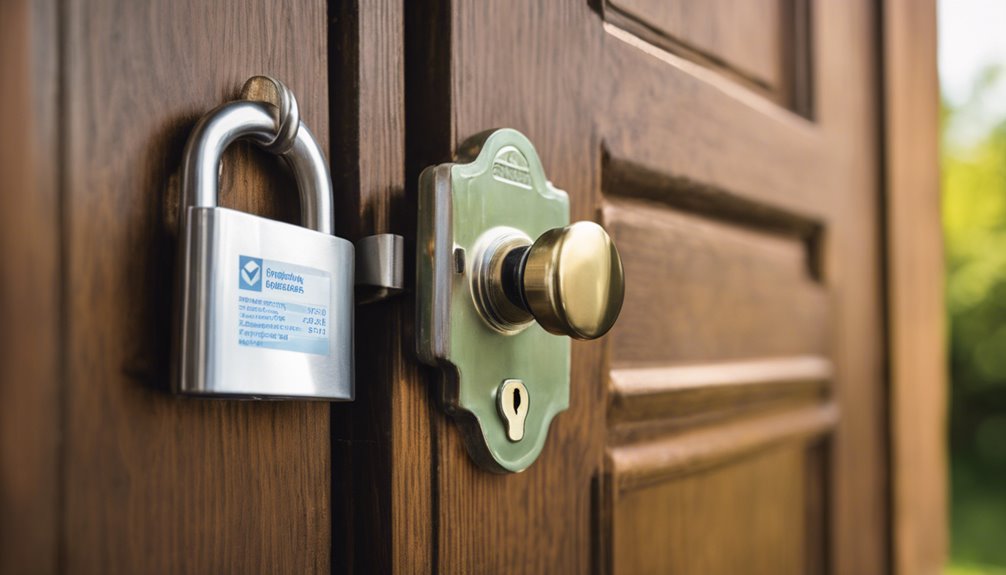
Maintaining compliance with public property regulations is vital for property owners in Ohio, as it guarantees the safety, security, and aesthetic integrity of residential areas. Keeping your property free of weeds, debris, and pollutants isn't just good practice; it's a necessity dictated by local laws.
If you neglect your front and side yards, failing to meet neighborhood standards, you're not only detracting from your property's value but also inviting potential code enforcement actions.
Security measures, such as locking windows and doors, are essential. Failing to secure your property can lead to unauthorized access, particularly by children. Broken windows should be promptly repaired, and any boarded areas must be painted to match existing trim, maintaining aesthetic uniformity while guaranteeing safety.
Local ordinances further dictate property upkeep, including exterior maintenance like graffiti removal. Do your part by using paint that matches the original surface color—the law requires it.
Also, be aware that abandoned property not only creates hazards but also incurs costs for removal.
Health and safety standards are equally important. Confirm your residence is free from lead hazards and that outdoor areas are safe for residents, especially children.
Finally, managing pets responsibly according to state laws is essential for community well-being.
Frequently Asked Questions
What Are the Penalties for Non-Compliance With Lock Regulations?
If you don't comply with lock regulations, you might face significant penalties.
These can range from fines to possible criminal charges, all depending on the severity of the violation.
You'll likely incur daily penalties until the issue's resolved and could even be tagged for non-compliance, prohibiting use of the property.
It's crucial to stay informed and adhere to regulations, as repeat offenses can escalate the fines and consequences you encounter.
Are Homeowners Required to Have Insurance for Lock Failure?
You might think you're free to carelessly skip out on homeowners insurance, but lo and behold, it's your financial lifeline!
While no law in Ohio says you must have it, if you want to protect yourself from disastrous lock failures—or any perils, really—you'd better reconsider.
Mortgage lenders often demand homeowners insurance.
How Often Should Locks Be Replaced for Optimal Security?
To maintain maximum security, you should replace your locks every 5 to 7 years.
If you're in a high-risk area or running a business with high employee turnover, consider changing them every 1 to 2 years.
Regularly inspect your locks for wear or damage, and always update them after a security breach or loss of keys.
Prevent unauthorized access and guarantee your safety by incorporating lock replacements into your overall security strategy.
Can I Install My Own Locks Without Professional Help?
Installing your own locks can be empowering, like crafting your own shield of security. You can absolutely do it, but make certain you follow the manufacturer's instructions closely.
A proper installation guarantees effective protection and longevity. If you're not confident or if the lock involves complex mechanisms, consider consulting a professional. They'll make certain it's done right.
What Type of Locks Are Best for Rental Properties?
When considering locks for rental properties, smart locks offer convenience with remote access and customizable codes, making them ideal for modern tenants.
Keypad locks provide easy code-based entry and allow for quick code resets between tenants.
If you're managing multiple properties, landlord locks with rekeyable features can simplify security.
Each option balances security and ease of use, so assess your specific needs to determine the best fit for your rental situation.
Conclusion
In Ohio, lock standards and safety regulations aren't just guidelines—they're your fortress against chaos! By following these requirements, you're not just securing doors and windows; you're building an impenetrable shield for your property. Imagine a world where every entry point is like a castle gate, fortified against invaders. With diligent maintenance and adherence to regulations, you're not just protecting assets; you're sculpting peace of mind. Stay compliant, and let your security echo through every corner of your domain!

